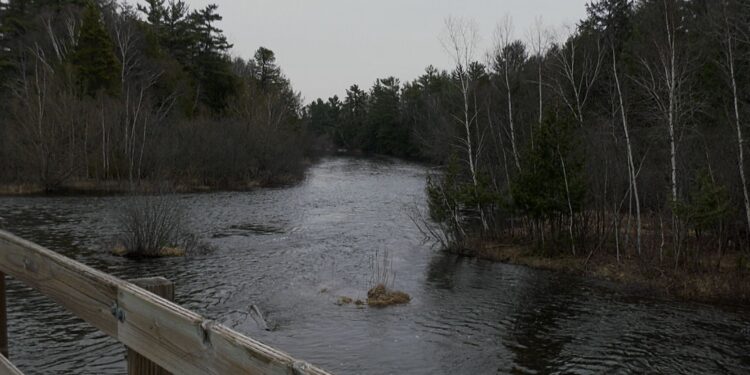MANISTIQUE, Mich. (WZMQ) – A project is underway to replace the 106-year-old Manistique Papers Dam. The Great Lakes Fishery Commission (GLFC) and the U.S. Fish and Wildlife Service are surveying the area to prevent the invasive sea lamprey from harming the ecosystem.
According to GLFC Legislative Affairs and Policy Director Greg McClinchey, sea lampreys are a major threat to wildlife in the Great Lakes.
“They would breed prolifically and they would eat prolifically and—if left completely unchecked—have the potential to wipe out fish in the five great lakes in between three and five years,” he said.
The Great Lakes Fishery Commission is working to ensure lampreys do not gain additional habitat as the dam project moves forward.
“The Manistique River is a significant contributor of invasive and, dare I say, destructive sea lamprey in both lakes Michigan and Huron,” said McClinchey. “There’s the potential in that system for them to harbor more than a million sea lampreys.”
Those sea lampreys can have devastating impacts on fish populations.
“Every female sea lamprey will lay about 100,000 eggs, and every sea lamprey in its lifetime will consume about 40 pounds of fish,” McClinchey explained. “The math gets really bad really fast.”
The Fishery Commission regularly treats more than 300 miles of the Manistique River and its tributaries. Across the Great Lakes, the commission has cut lamprey populations by more than 90% of the traditional average.
McClinchey says controlling sea lamprey populations is a job that requires great consistency. When efforts are reduced, even for a brief period of time, the numbers change drastically.
“During the COVID years when we weren’t able to execute a full control program, lamprey populations went up in some places as high as 300%,” said McClinchey. “You can’t let up on them for a second.”
Currently, McClinchey says the Manistique River has a median estimate of just over a million larval lampreys.
“If only one percent of that population were to transform from—in simple terms—being larval or babies into their feeding stage and go out into the lakes, we would see just shy of a half of million pounds of fish that would be lost,” he said. “That’s just in year one. Then, of course, they grow exponentially after that.”
That’s why the Fishery Commission says the surveying work, which has been done most recently along the Indian River, is so critical. By studying data collected from drone footage and river bed elevation collection, the commission will be able to design an ideal barrier to keep sea lampreys from causing further damage to the creatures of the Great Lakes.
“It really is about understanding that whole area and what this water is going to do,” said McClinchey. “This dam has been there for more than a century. When you remove it, there’s a lot of things that have to be considered because we don’t need any surprises—either from a sea lamprey perspective or from any other perspective of water management in that area.”
To learn more about how the Great Lakes Fishery Commission controls sea lamprey populations, visit glfc.org.


















